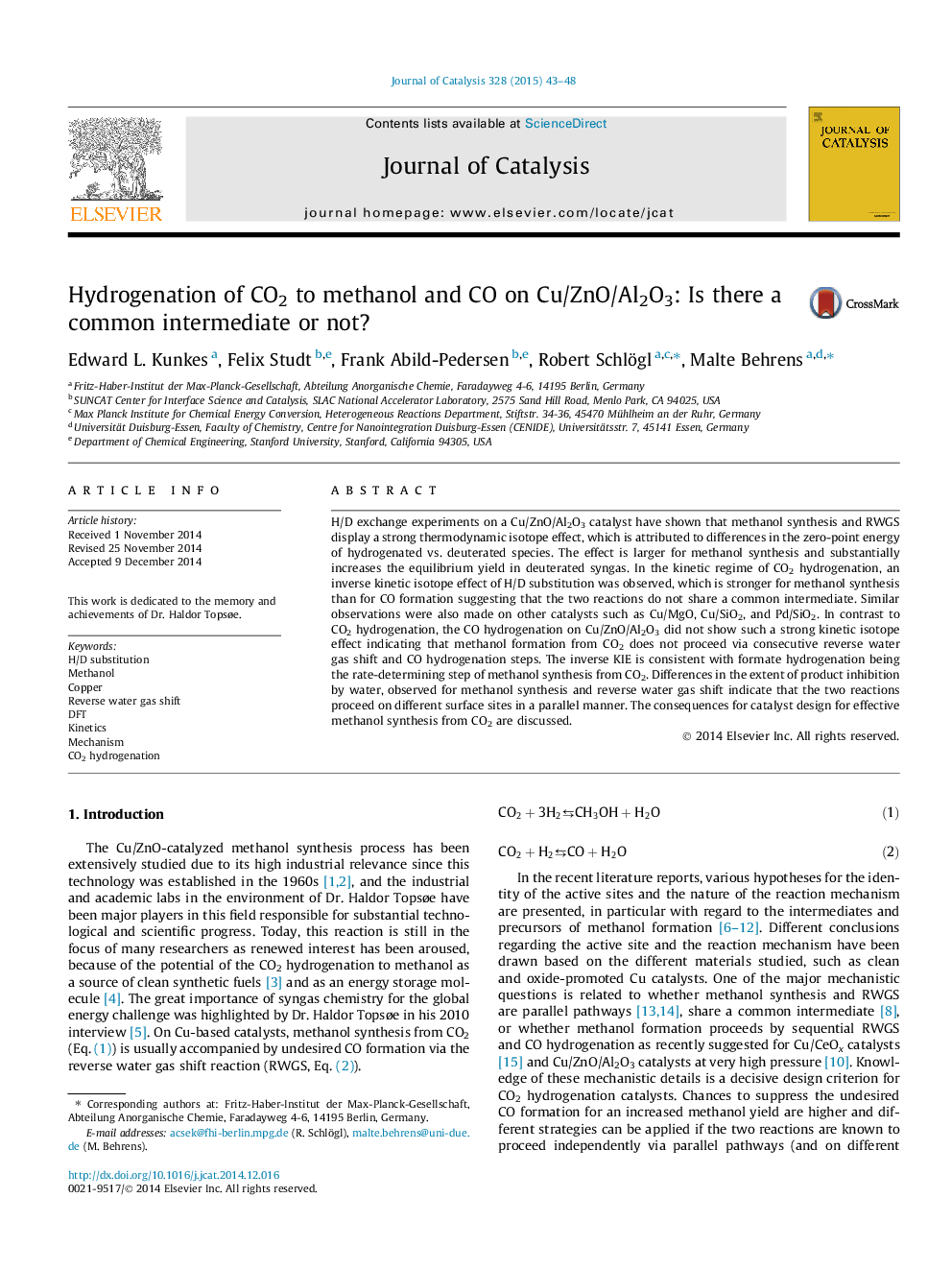| کد مقاله | کد نشریه | سال انتشار | مقاله انگلیسی | نسخه تمام متن |
|---|---|---|---|---|
| 60762 | 47547 | 2015 | 6 صفحه PDF | دانلود رایگان |

• Isotope effects of H/D substitution in the feed have been investigated for CO2 hydrogenation over Cu/ZnO/Al2O3.
• The kinetic isotope effect is inverse and more significant for methanol (rH/rD = 0.6) than for CO (rH/rD = 0.9).
• This observation suggests that methanol and CO are not formed via a common intermediate.
• The inverse character of the effect was modeled on a stepped CuZn surface site by DFT calculations.
• The results are discussed in the context of catalyst design for CO2 hydrogenation.
H/D exchange experiments on a Cu/ZnO/Al2O3 catalyst have shown that methanol synthesis and RWGS display a strong thermodynamic isotope effect, which is attributed to differences in the zero-point energy of hydrogenated vs. deuterated species. The effect is larger for methanol synthesis and substantially increases the equilibrium yield in deuterated syngas. In the kinetic regime of CO2 hydrogenation, an inverse kinetic isotope effect of H/D substitution was observed, which is stronger for methanol synthesis than for CO formation suggesting that the two reactions do not share a common intermediate. Similar observations were also made on other catalysts such as Cu/MgO, Cu/SiO2, and Pd/SiO2. In contrast to CO2 hydrogenation, the CO hydrogenation on Cu/ZnO/Al2O3 did not show such a strong kinetic isotope effect indicating that methanol formation from CO2 does not proceed via consecutive reverse water gas shift and CO hydrogenation steps. The inverse KIE is consistent with formate hydrogenation being the rate-determining step of methanol synthesis from CO2. Differences in the extent of product inhibition by water, observed for methanol synthesis and reverse water gas shift indicate that the two reactions proceed on different surface sites in a parallel manner. The consequences for catalyst design for effective methanol synthesis from CO2 are discussed.
Figure optionsDownload high-quality image (56 K)Download as PowerPoint slide
Journal: Journal of Catalysis - Volume 328, August 2015, Pages 43–48